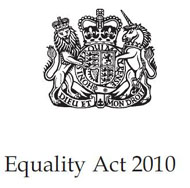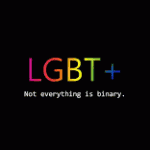The Equality Act 2010
The Equality Act 2010 is one of the most important pieces of legislation for minority groups in the UK. Here we will also explain how the Schools OUT Classroom will help you meet the requirements of this law and improve the lives of your learners.
You may want to explore this also with your learners. Here are links to two resources that make clear what the Act means.
1) Equality Act 2010 animation
2) Schools OUT Equality Act 2010 PowerPoint
The Equality Act 2010 introduces a single equality duty on public bodies such as schools. It takes all previous equalities legislation and combines them into one overarching act. The Equality Act specifically protects the rights of people who hold characteristics in one or more of the following groups: race, disability, sex, age, religion or belief, sexual orientation, pregnancy and maternity and gender reassignment. These groups are called protected strands or characteristics and are detailed below:
Age: Where this is referred to, it refers to a person belonging to a particular age (e.g. 32 year olds) or range of ages (e.g. 18 – 30 year olds).
Disability: A person has a disability if s/he has a physical or mental impairment which has a substantial and long-term adverse effect on that person’s ability to carry out normal day-to-day activities.
Gender reassignment: The process of or desire to transition from one gender to another.
Marriage and civil partnership: Marriage is defined as a ‘union between a man and a woman’. Same-sex couples can have their relationships legally recognised as ‘civil partnerships’. Civil partners must be treated the same as married couples on a wide range of legal matters. Same sex marriage legislation is currently being passed and is expected to be law by April 2014 in England and Wales – and around the same time in Scotland.
Pregnancy and maternity: Pregnancy is the condition of being pregnant or expecting a baby. Maternity refers to the period after the birth, and is linked to maternity leave in the employment context. In the non-work context, protection against maternity discrimination is for 26 weeks after giving birth, and this includes treating a woman unfavourably because she is breastfeeding.
Race: It refers to a group of people defined by their race, colour, and nationality (including citizenship) ethnic or national origins.
Religion and belief/non-belief: Religion has the meaning usually given to it but belief includes religious and philosophical beliefs including lack of belief (e.g. Atheism). Generally, a belief should affect your life choices or the way you live to be included in the definition.
Sex: Legally, the Equality Act describes ‘sex’ as whether someone is a man or a woman.
Sexual Orientation: Whether a person’s sexual attraction is towards their own sex, the opposite sex or to both sexes
Combined characteristics It is recognised under the Act that a person may be discriminated against due to combined characteristics such as receiving both racism and homophobia.
This combined equality duty came into effect in April 2011 and has three main elements. In carrying out their functions, public bodies are now required to have due regard to the need to:
The Public Sector Equality Duty
1) Eliminate conduct that is prohibited by the Act that is discrimination, harassment and victimisation.
2) Advance equality of opportunity between people who share a protected characteristic and people who do not share it
3) Foster good relations across all characteristics – between people who share a protected characteristic and people who do not share it.
The Schools OUT Classroom and its associated resources give educational institutes the skills, knowledge and confidence to meet all three of these requirements. Much of our work centres on Sexual Orientation and Gender Reassignment (Identity), but we also look at the intersection of identities and know that our impact will help foster good relations across all the protected characteristics. e.g. a disabled 70 year-old man who is gay may suffer prejudice, not because of his sexual orientation alone, but due to prejudice and discrimination both as a result of his being disabled and gay, old and gay, disabled and old, and all three. In each case the prejudice may be different and come from different groups.
Further points on how to meet these duties:
1) Eliminating discrimination, harassment and victimisation.
- Clear effective policy and practice on behaviour and language
- Train all staff, front line and backroom on equalities and diversity issues regularly. Ensure such training includes case studies that are real to them.
- Use surveys and questionnaires regularly to gauge what is happening in the organisation
- Analyse complaints received and actions taken and use outcomes to change and develop practice
- Make reasonable adjustments
2) Advancing Equal Opportunity
- Equal opportunity is a needs based approach; it cannot work on a one size fits all basis.
- Use surveys, social networks, outside groups to inform you of needs and gaps
- Monitor service users and service givers and explain why you are doing it how you keep things confidential
- Put on the top of the form what you have learnt since the last time you monitored and what you have done to make a positive difference
- Embed learning in all areas of both service delivery and employment
3) How to foster good relations
- Requires tackling prejudice and promoting understanding
- Inform people about the issues – history of oppressions problems of accessibility past lack of inclusion
- Educate – curriculum, images and language – ensure that the diversity of the population of the country not just your patch is represented in all the material you use.
- Use diversity months
- Ensure your material, publicity, forms are inclusive in image and language and intent.







